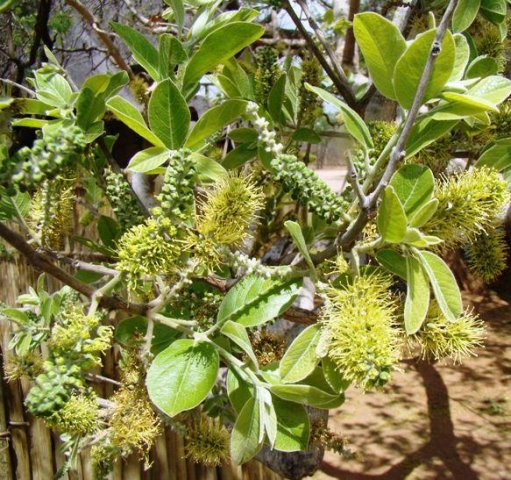Combretum zeyheri

Author: Ivan Lätti
Photographer: Ricky Mauer
Combretum zeyheri, the large-fruited bushwillow and in Afrikaans the raasblaar (leaf that makes a noise), is a medium-sized, deciduous tree that grows a rounded crown and reaches 10 m in height, although usually not becoming that tall (SA Tree List No. 546). Some of the growth may happen sideways in low branches or multiple stems in angled shapes.
The fresh yellow-green leaves and flowers are seen at the beginning of the growing season. The photo was taken on 20 September in the southern hemisphere spring.
The distribution of C. zeyheri lies in the northern regions of South Africa, in KwaZulu-Natal, Mpumalanga, Limpopo, Gauteng and North West. It has a wider distribution to the north beyond the South African border in Africa.
The habitat is is bushveld or savannah, rocky slopes and riverine forests where hot, rainy summers and dry, dusty winters are the norm. The trees grow at low or medium altitudes from 50 m to 1500 m. The habitat population is of least concern early in the twenty first century.
The wood is used as general purpose timber, its benefits including hardness, termite- and borer-proof durability, the big bulk available per mature tree, an attractive yellowish-brown colour and being easy to work. The fibrous roots of the tree are woven into baskets and fishing traps by indigenous tribes. The gum is edible. Several traditional medicinal concoctions are prepared using roots and leaves (Coates Palgrave, 2002; Schmidt, et al, 2002; Van Wyk and Van Wyk, 1997; iNaturalist; http://redlist.sanbi.org).

